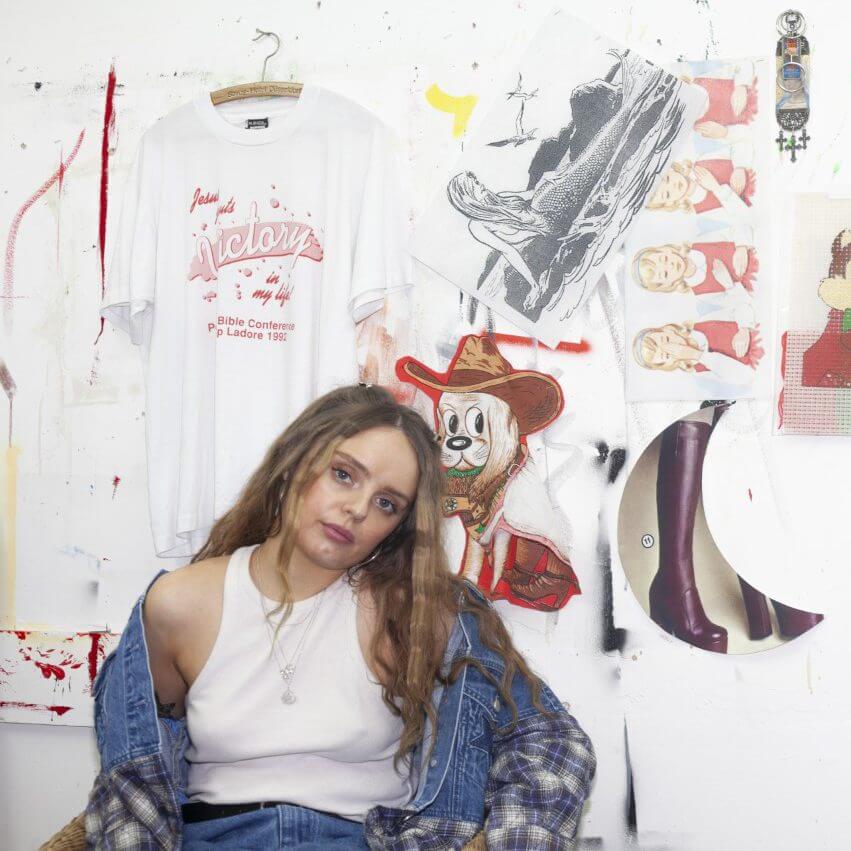Tell us a bit about yourself and what you do.
My name’s Fern O’ Carolan and I’m an Irish artist from Dublin, based in Leeds. I collect magazines of every genre and more recently, have grown a large keyring collection, mostly from the 80’s.
Can you talk about your upbringing? I understand that you attended a religious school early on, was this an environment that nurtured creativity?
Absolutely n0t, creativity was completely frowned upon and we had no art facilities to work with. I remember submitting a Lino cut for my A level exam and we had to use a spoon to press the ink onto the paper, it took an hour instead of 5 minutes. The emphasis was put on making us all submissive housewives so, the energy was put on teaching us traditional home crafts like knitting, sewing, embroidery and more importantly keeping us from as many boys as possible…
Thankfully my dad has encouraged my creativity from the get-go, he’s a hippie so he gets it. When he was a kid, he used to bunk off school in Ballymun and go to The National Portrait Gallery and study all the paintings, to note he was 8 when he started doing that, which is crazy. I vividly remember being taken as a kid to see Francis Bacon’s studio at Hugh Lane in Dublin and it changed my life forever.
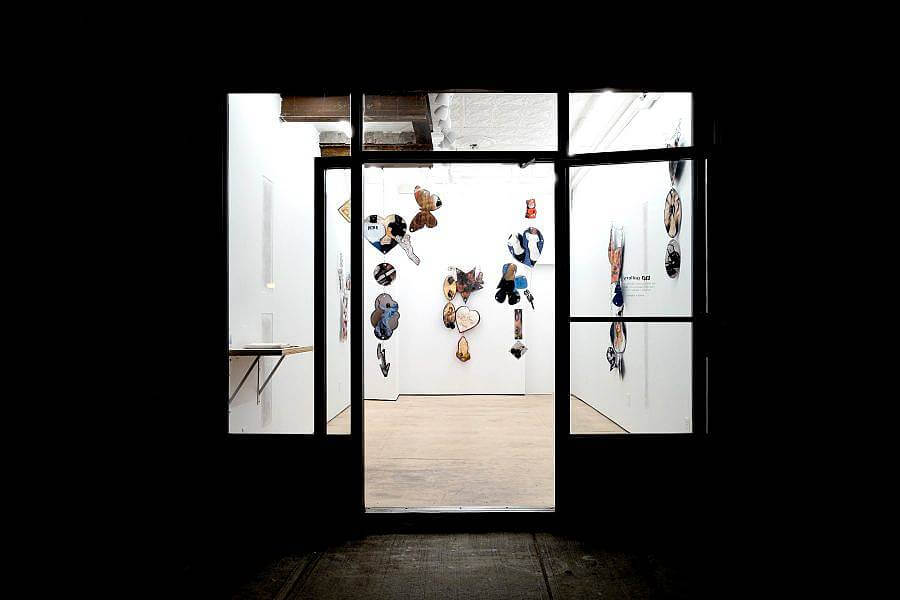
Can you talk about your new solo exhibition “You’ll Never Get to Heaven” at NO Gallery?
The thought behind the show itself has been years in the making for many reasons, mainly being it has taken me quite some time to articulate and reverse the effects it has had on my adult life. I was educated at a public all-girl Catholic school, taught by nuns. The education environment demonised femininity, with a specific ire towards the developing sexuality of the students. Our sex-education consisted only of the assertion that if they should explore any form of sex before marriage to a man, they would be condemned to hell for this sin.
My school years were surrounded by adults preaching abstinence as contraception and because of this, the lack of education led to pregnancies, which the families hid and had the girls sent to England to be aborted. I didn’t know this happened until years after when Repeal The 8th (the legalisation of abortion rights in Ireland) went forward and my then peers spoke out about their experience’s online years after. Coming from this environment as a female artist, I felt a need to pursue feminisms capable of existing outside of the female moral dichotomy.
The feedback and response from the show has been truly eye opening, so many people have approached me with their experiences around religion, specifically Catholicism, most of which have been identical to my own. Just for people being able to resonate with the work on such a personal level means the world, to have these conversations so openly within a gallery context is vital.
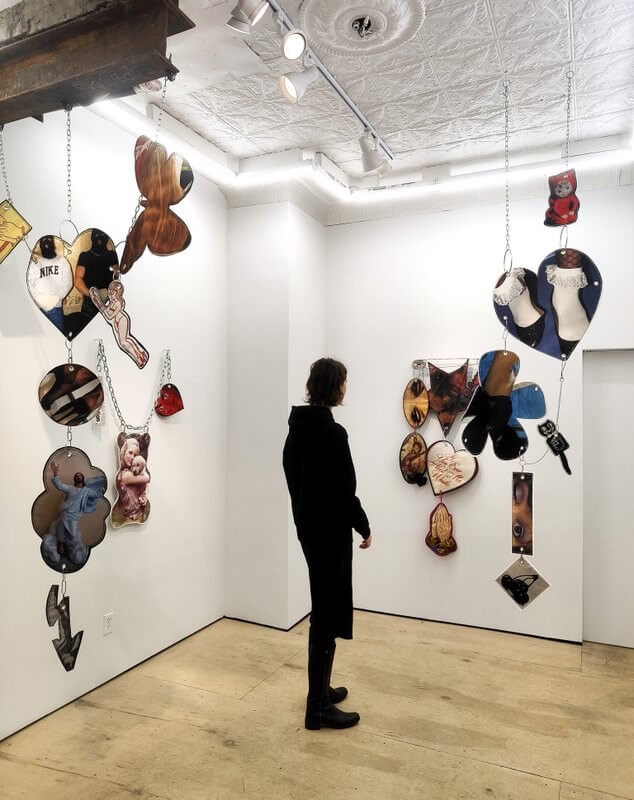
What are your thoughts on transgression within your work and the greater landscape of contemporary art?
This question crops up a lot when asked about my work, and one I am quite passionate about. When I hear that or get asked, it evokes sounds and images of red tape, blocked parts of images and sounds of book burning. Through omission of entities, values or imagery from contemporary art which are present in popular culture, I feel there is a refusal to acknowledge their influence or effects on communities and individuals.
I believe that discussions surrounding contemporary art and transgression within feminism in particular have reached a point of stagnation. This stems from the regurgitation and repackaging of the same ideas, continuing to fall on deaf ears until they became drab and listless. I feel that as feminist, gender neutral or LBGTQ+ practitioners, it is our responsibility to find new ways of representing our communities and political identities, not just within art but in the wider world.
Through my work, I always aim to discern a clear understanding of the changing face of the role of the theoretical ‘Woman’ artist. My main aim within my practice is to explore feminism with an equal rejection of patriarchal structures and the authoritarian contemporary feminist aesthetic. I believe that now is an essential time for the idea of the feminist artist to evolve, for us to identify our goals, to make our voices heard and to reinvigorate femininity as a source of fresh and exciting conceptual practice. That is #1 for me personally…
What are your top ten “on repeat” songs?
Lowlife- Wild Swan
Corpses In Their Mouths- Ian Brown
Adorable- Homeboy
Life Without Buildings- The Leanover
Spacemen 3- An Evening Of Contemporary Sitar Music, live
The Chameleons- Swamp Thing
My Bloody Valentine- Blown a wish
Alex G- Ain’t It Easy
Murderer- Piece Of Candy
Sma3- Taqbir
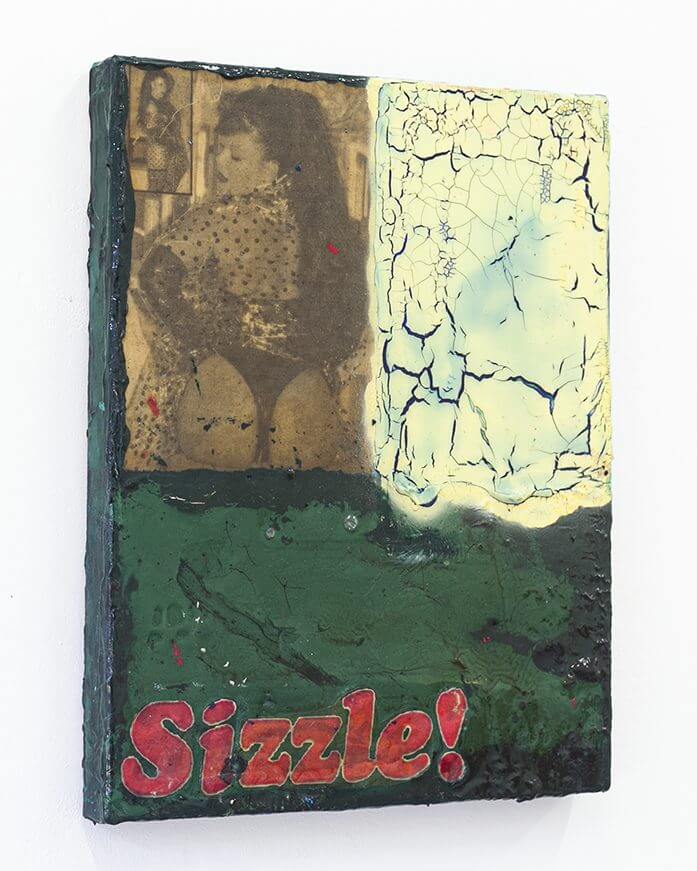
What are your studio essentials?
My desktop printer and scanner, this was given to me 3 years ago now and it’s the best present I’ve ever been gifted. Magazine collection, Sewing box, computer, canvas roll and laptop. Those are the core essentials however it really depends on what the idea is on what given day. I’ve begun collecting a lot, 60’s-80’s ephemera mostly, like mickey mouse bears, 70’s Sindy furniture in their original boxes, ceramic dogs? I love kitsch, so much. As my work has begun to progress naturally into sculpture, I have begun thinking of ways in which I can incorporate these objects, making it a little more zany and otherworldly.
Can you talk about the visual language of the suspension and charm jewellery in your newer works?
The works on show make references to 90’s charm-jewellery, the sort of pretty amulets of protection given as gifts to loved ones as well infant mobiles, eschewing the cute and comforting imagery in favour of an aesthetic language seeking to challenge the value of innocence as much as it does the embracing of corruption. These works present my own spectrum of visual identity, what that language can do to empower or exclude women and to what extent we use those interpretive biases against one another.
“You’ll Never Get To Heaven” embraces craft processes, from sewing to scrapbooking, with each individual piece sewn by hand – a casual nod to women’s work – to produce a series of works capable of challenging contemporary notions of femininity, religion and gendered oppression whilst maintaining a sense of lightness and humour.
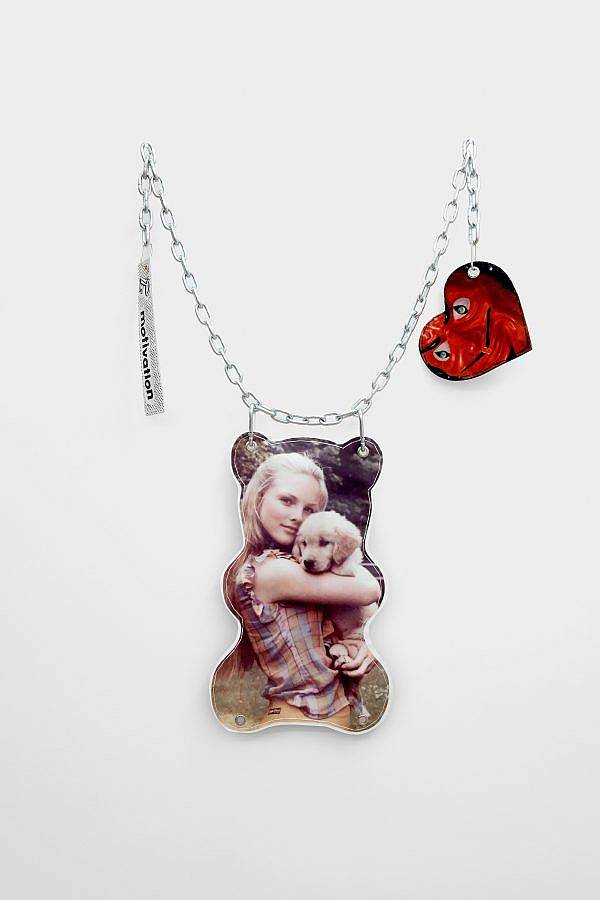
How would you describe your relationship with images?
My relationship with images is a strange one which started very early on. I grew up half in the city, half in rural Irish countryside with nothing around it, we had no TV, and the radio signal was so bad because the house was so far out. I have a sibling with Autism and would be on my own as a kid venturing finding ways to entertain myself. Naturally I was always on the quest to find something that would excite or scare me in some way and became drawn to newspapers due to the fact they were always around. A particular favourite was the obituary section at the back, the portraits of the people at the back would fascinate me and I would think of how they may have died and what they may have been like (macabre yes). My mum would drive me to the Village sometimes as a treat and I would buy those kid magazines, you know the ones that were mainly puzzles?
In time this progressed to women’s magazines like Cosmopolitan, Elle etc and this is how I learned about sexuality in every capacity. At home or in school, because we were not taught about anatomy, my understanding and learning came from advice columns. Through observing magazines from a very young age, I grew to develop an understanding of imagery and the power certain images had to convey messages, whether they were sexual or trying to get you to buy something.
This has been the key element within my practice, there isn’t a day that goes by where I don’t archive an image. Rather than using images of myself within my work I use different components from different sources, mostly being scans, these are used to make up a storyboard, a metaphor for my own experiences. It’s important the work is tongue and cheek; I try to make dark situations into light, re-contextualizing images using collage allows a sense of fluidity.
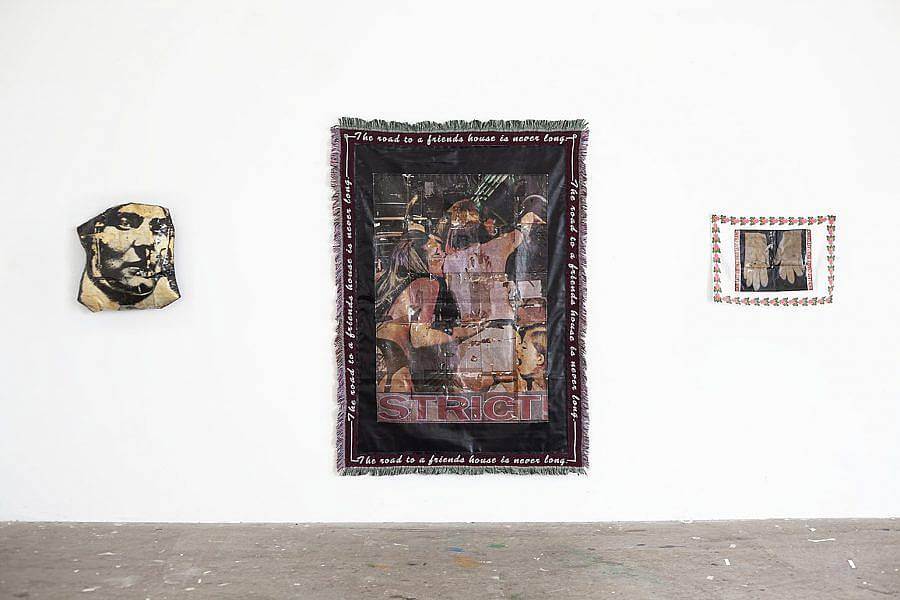
Do you have any daily rituals?
Drink a cafetière of coffee and check out this bric a brac store beside my house, called Revive, it’s the most bizarre place ever, super surreal. They have anything and everything you could ever imagine. I remember going to the supermarket once and seeing a coffin in the window…no lie. When I came back out there was a sign in the window in big caps SOLD….I usually go to see what materials I can find, fabrics, ceramics etc it’s a gold mine. Then I’ll go to the studio and piece together a few things, I let the materials do most of the work and go from there.
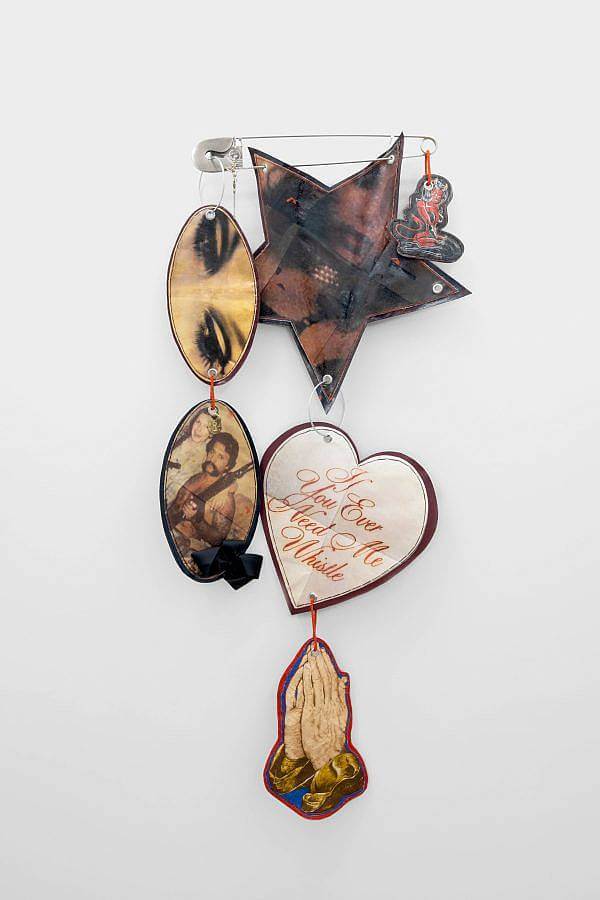
Any upcoming projects you can share?
There are a few exciting things in the mist show wise, which I will soon be able to share. I have a book and zine publication coming out which is cool, I’ve not published anything to date so that’ll be new for me. My friend has just gone pro and has asked me to design a new skateboard to be launched, one for the bucket list. This year will be a fun one regardless of anything, just gotta roll with it!
Interview conducted and edited by Sam Dybeck.
Photo credit NO Gallery.
